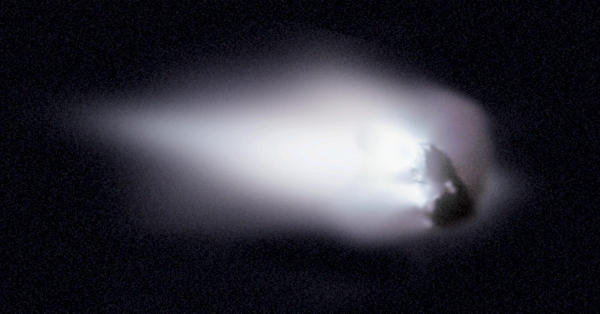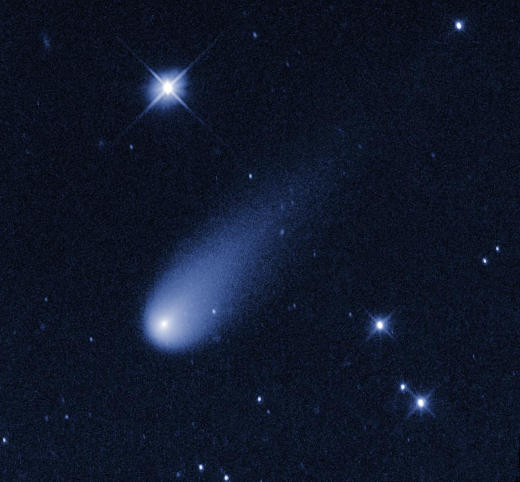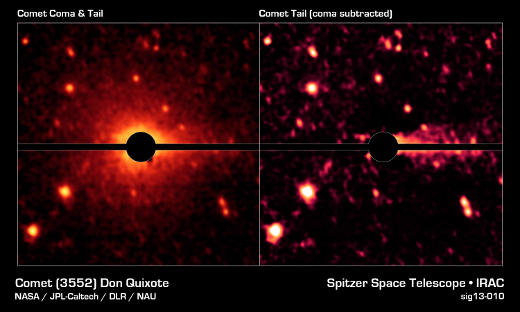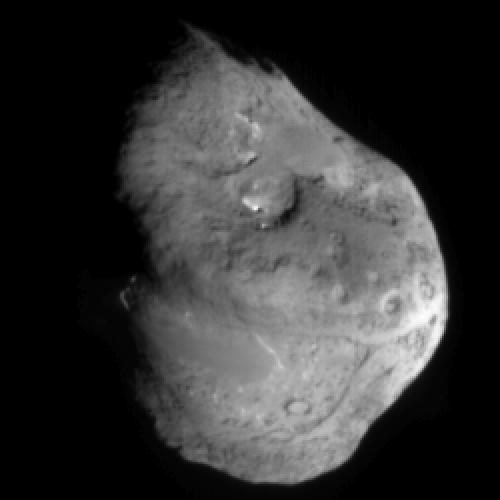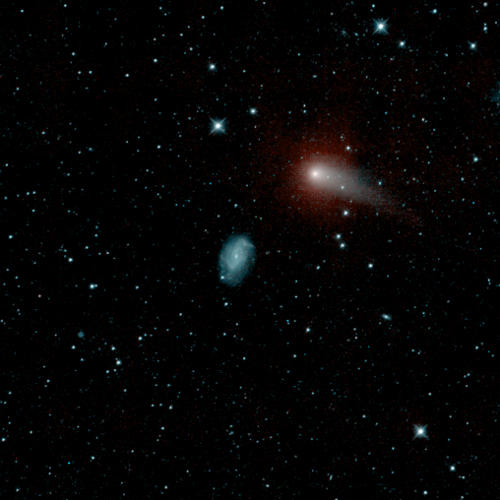
Comet C/2012 K1 – also known as comet PanSTARRS was photographed by the NEOWISE mission’s telescope while 230 million kilometers away from Earth. In this infrared image, the comet can be seen going through a much more distant spiral galaxy, called NGC 3726, which is about 55 million light-years from Earth, or 2 trillion times farther away from us than comet Pan-STARRS.
